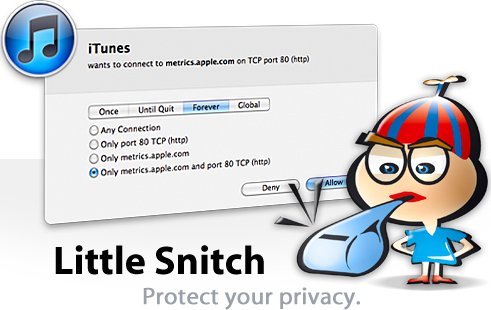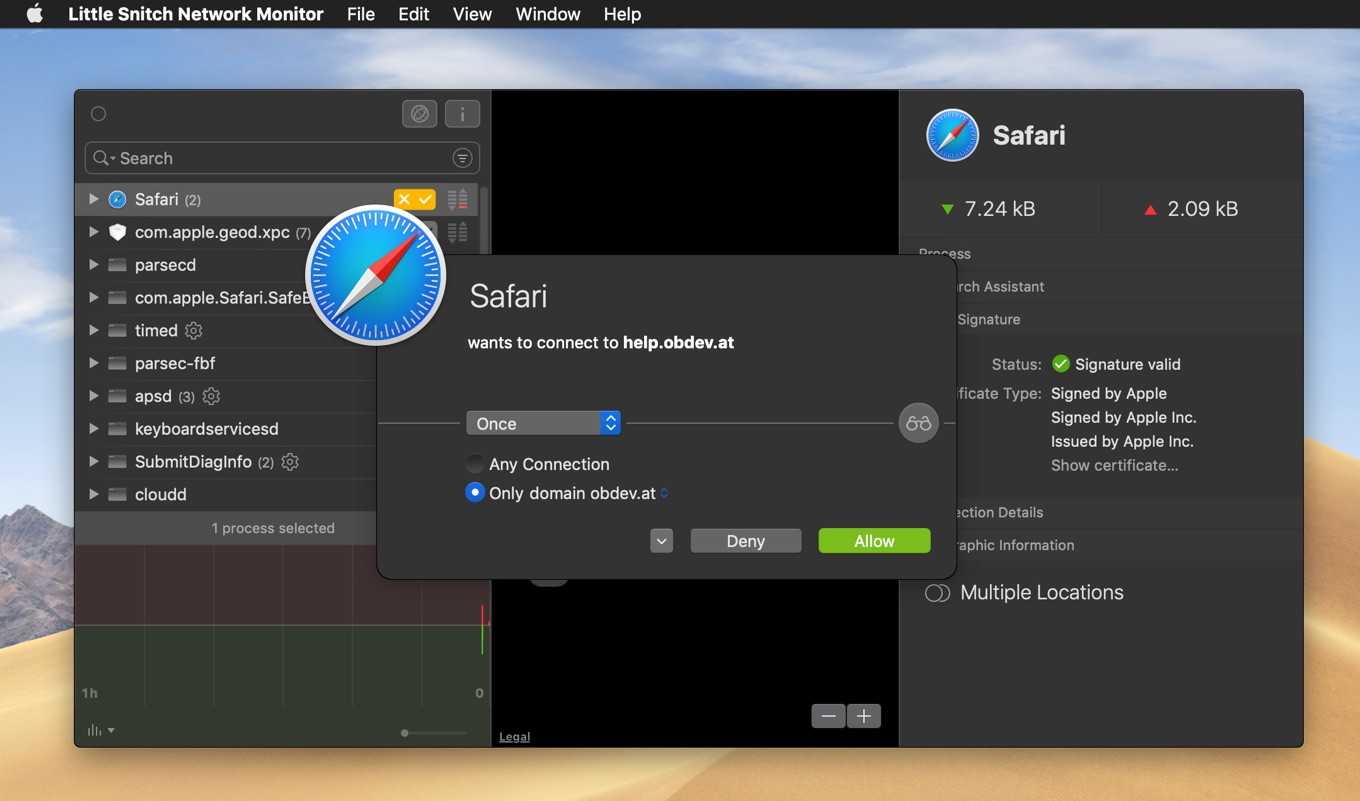| Developer(s) | Objective Development Software GmbH |
|---|---|
| Stable release | 4.5 (March 30, 2020; 19 days ago[1]) [±] |
| Written in | Objective-C |
| Operating system | macOS |
| Available in | German, English, Chinese, Japanese, Russian |
| Type | Firewall |
| License | Proprietary |
| Website | https://obdev.at/products/littlesnitch |
| Usage | |
When I reviewed Objective Development Software GmbH’s Little Snitch 1.2 for Macworld two years ago, it helpfully filled a gap in the ipfw firewall software Apple provides with Mac OS X. Little Snitch does! Little Snitch informs you whenever a program attempts to establish an outgoing Internet connection. You can then choose to allow or deny this connection, or define a rule how to handle similar, future connection attempts. This is not implemented as of Little Snitch 4.4, but it is recommended that you add identifiers wherever possible so future versions of Little Snitch can – for example – add an appropriate icon for the service in the user interface when showing your app’s IAP.
Nov 26, 2018 Unlike Little Snitch, Lulu is an open source software with its source code already on GitHub. This means that it’s not just free, but also anyone can contribute to its development. Same approach to application firewall. If you’ve been using Little Snitch before now, you shouldn’t have a problem using Lulu. May 08, 2008 When I reviewed Objective Development Software GmbH's Little Snitch 1.2 for Macworld two years ago, it helpfully filled a gap in the ipfw firewall.
Little Snitch is a host-based application firewall for macOS. It can be used to monitor applications, preventing or permitting them to connect to attached networks through advanced rules. It is produced and maintained by the Austrian firm Objective Development Software GmbH.
Little Snitch For Development 2
Unlike a stateful firewall, which is designed primarily to protect a system from external attacks by restricting inbound traffic, Little Snitch is designed to protect privacy by limiting outbound traffic.[2] Little Snitch controls network traffic by registering kernel extensions through the standard application programming interface (API) provided by Apple.[3]
If an application or process attempts to establish a network connection, Little Snitch prevents the connection. A dialog is presented to the user which allows one to deny or permit the connection on a one-time or permanent basis. The dialog allows one to restrict the parameters of the connection, restricting it to a specific port, protocol or domain. Little Snitch's integral network monitor allows one to see ongoing traffic in real time with domain names and traffic direction displayed.

The application (version 4) received a positive 4.5/5 review from Macworld.[4]
References[edit]

- ^'Release Notes – Little Snitch'. Retrieved March 31, 2020.
- ^'Little Snitch 4'. Retrieved July 20, 2019.
- ^Little Snitch 3 - Documentation. Objective Development Software GmbH. 2013.
- ^Fleishman, Glenn (September 8, 2017). 'Little Snitch 4 review: Mac app excels at monitoring and controlling network activity'. Macworld. Retrieved July 20, 2019.
Little Snitch For Pc
External links[edit]
- Official website